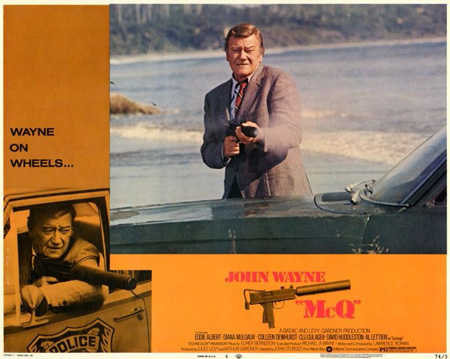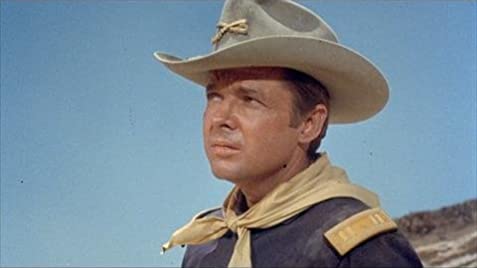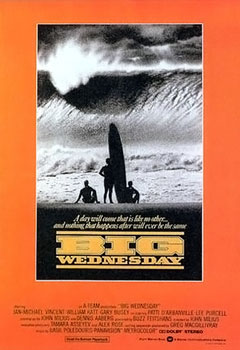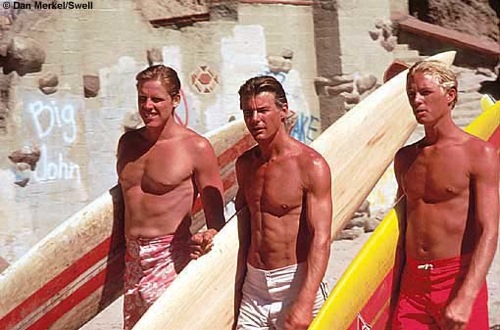
Paul Newman as San Francisco Police Detective Harry “Dirty Harry” Callahan?
Today, it sounds unthinkable that the outspokenly liberal Newman could ever have been a contender for the role of Harry Callahan, a police detective who is quick with a quip but even quicker on the trigger. As everyone knows, Clint Eastwood played Harry and, as a result, he finally became as big of a star in the United States as he already was in Europe. Today, it’s impossible to imagine anyone other than Clint Eastwood torturing the Scorpio Killer for information and then announcing himself to be “all torn up about his rights.” Just try to imagine Paul Newman snarling as reflexively as Clint Eastwood did upon hearing that the whiny guy in the liberal office taught constitutional law at Berkeley. Try to imagine Paul Newman calling someone “a punk” or bragging about the power of his gun. It can’t be done.
And yet, as hard as it is to believe, Clint Eastwood was not the first choice for Harry Callahan. In fact, Eastwood apparently wasn’t even on Warner Bros.’s list of contenders when they initially bought the rights for the script that would eventually become Dirty Harry.

Written by Harry Julian Fink and Rita M. Fink, that script was originally called Dead Right and it took place in New York. In the original script, Harry Callahan was world-weary, veteran New York cop, in his 50s and just a few months away from retirement. In the original script, Harry pursued a serial killer named Travis. When Warner Bros. bought the script in 1969, they viewed it as being a potential vehicle for Frank Sinatra with Irvin Kershner directing. (Kershner is probably best remembered for later directing The Empire Strikes Back.) As was his habit, Sinatra immediately demanded rewriters. John Milius wrote three drafts, each one expanding on the idea of Callahan as a rebel against the system. Terrence Malick (yes, that Terrence Malick) was also brought it and came up with a storyline in which the serial killer would specifically be targeting mobsters and other people who had escaped justice. Somewhere, amongst all the rewrites, the action moved from New York to Seattle.
After all that effort, why didn’t Frank Sinatra play Harry Callahan? Reportedly, he broke his hand and, as a result, he was told that he wouldn’t be able to hold a microphone or a gun or anything else while it was healing. Since you really can’t have Harry Callahan without a gun, Sinatra left the project and Irvin Kershner went with him.

While trying (unsuccessfully) to recruit Sidney Pollack as their new director, Warner Bros. searched for a new leading man. Reportedly, the script ended up on John Wayne’s desk. Wayne later said that he turned down the role because he felt the violence was gratuitous. Other sources indicate that John Wayne actually was interested in the role but that the studio didn’t consider him to be contemporary enough. (After the success of Dirty Harry, Wayne would play a similar cop character in McQ and would provide a hint of what Dirty Harry starring John Wayne would have been like.) Burt Lancaster turned down the role because he didn’t like the script’s politics. Lee Marvin and Robert Mitchum both turned down the role because they refused to play cops. George C. Scott reportedly refused the role because of the violence. Marlon Brando was considered but, probably wisely, was never approached.

Having been turned down by all of the older tough guys, Warner Bros. went with the younger tough guys. Steve McQueen turned down the role because he had already played a cop in Bullitt and he felt the critics would accuse him of repeating himself. (He was probably right.) Paul Newman refused the role on political grounds but, as he often tended to do whenever he turned down a role, he also recommended another actor for the part. That actor was Clint Eastwood who was an old friend of Newman’s and who, obviously, had no problems with the film’s politics.
(Let’s take a moment to give some respect to Paul Newman, who was reportedly one of the nicest guys in Hollywood.)
Once Eastwood was on board, his requested that his friend and frequent collaborator, director Don Siegel, be hired to direct the film. The script was again rewritten, moving the action to San Francisco and making Harry into a far less talkative character. The serial killer known as Travis became the serial killer known as Scorpio. The idea of the killer targeting criminals was abandoned at Siegel’s insistence, though Eastwood liked the idea enough to use it for Dirty Harry’s first sequel, Magnum Force.

Audie Murphy
Originally, James Caan was approached for the role of Scorpio but Caan turned it down (which, of course, left him free to play Sonny in The Godfather). Perhaps most intriguingly, Audie Murphy was offered the role. Murphy was one of the most decorated combat soldiers of World War II. He had gone from the Army to appearing in movies. By the time Dirty Harry went into production, Murphy was largely appearing in B-westerns and was as known for his temper as his films. (He was acquitted of attempted murder shortly before filming began on Dirty Harry. Murphy said that his anger issues were largely due to the trauma of World War II and he was one of the first prominent people to openly speak about what has since become known as PTSD.) Murphy undoubtedly would have been an intimidating Scorpio but he died in a plane crash before he could accept or refuse the role.

Instead, the role went to Andrew Robinson, who an unknown at the time. He was also, in real life, a pacifist who had difficulty not flinching whenever he had to fire a rifle in the film. That said, Robinson gave a brilliantly unhinged performance as Scorpio and reportedly had to get an unlisted telephone number because of all the angry and threatening phone calls that he received after the movie was released.
Now, I have to admit that I personally find the idea of Frank Sinatra/James Caan or, for that matter, a John Wayne/Audie Murphy police procedural to be kind of intriguing. And goodness know, I would certainly like a chance to see Marlon Brando doing the “do you feel lucky, punk?” speech. In the end, though, I think things turned out for the best.




















 If there is a male bonding hall of fame,
If there is a male bonding hall of fame, 




